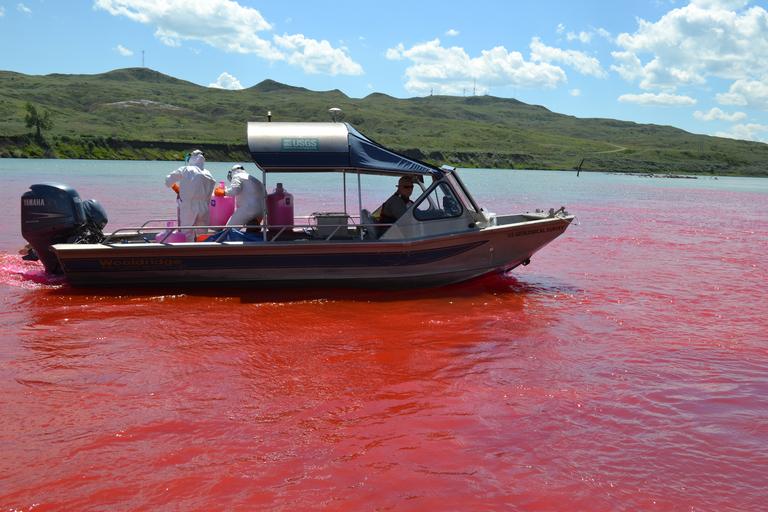MAKE A MEME
View Large Image

| View Original: | Red_in_the_River.jpg (4608x3072) | |||
| Download: | Original | Medium | Small | Thumb |
| Courtesy of: | www.flickr.com | More Like This | ||
| Keywords: usgs science biology research sturgeon montana missouri river missouririver vehicle boat outdoor River scientists started a large-scale collaborative study on June 24 to improve understanding of the fate of pallid sturgeon larvae on the Upper Missouri River in Montana. The red dye trace (Rhodamine-WT), in this photo, is intended to understand how hydraulic processes transport particles downstream. The dye, which is harmless but very visible, is frequently used to study time of travel in river systems, usually to assess contaminant transport rates. The downstream dispersion of dye is being recorded through a network of fluorimeters distributed through about 60 miles of the river. Better understanding of the dynamics in which the larvae move downstream, and how long they need to safely settle out and begin to feed, may lead to important recovery options for this endangered fish. The study is being led by scientists from the U.S. Geological Survey with strong collaboration with Montana Fish Wildlife and Parks, U.S. Fish and Wildlife, U.S. Army Corps of Engineers, Bureau of Reclamation, and Western Area Power Administration. Learn more about this effort at: on.doi.gov/csrp River scientists started a large-scale collaborative study on June 24 to improve understanding of the fate of pallid sturgeon larvae on the Upper Missouri River in Montana. The red dye trace (Rhodamine-WT), in this photo, is intended to understand how hydraulic processes transport particles downstream. The dye, which is harmless but very visible, is frequently used to study time of travel in river systems, usually to assess contaminant transport rates. The downstream dispersion of dye is being recorded through a network of fluorimeters distributed through about 60 miles of the river. Better understanding of the dynamics in which the larvae move downstream, and how long they need to safely settle out and begin to feed, may lead to important recovery options for this endangered fish. The study is being led by scientists from the U.S. Geological Survey with strong collaboration with Montana Fish Wildlife and Parks, U.S. Fish and Wildlife, U.S. Army Corps of Engineers, Bureau of Reclamation, and Western Area Power Administration. Learn more about this effort at: on.doi.gov/csrp | ||||